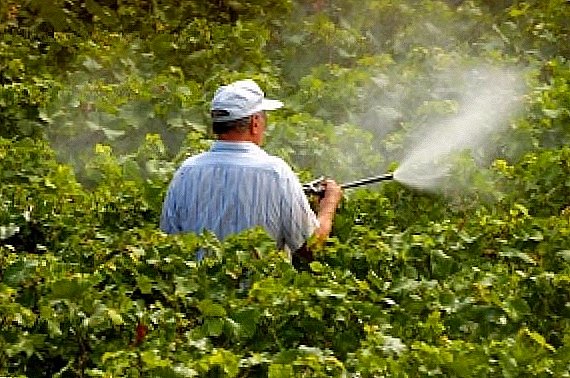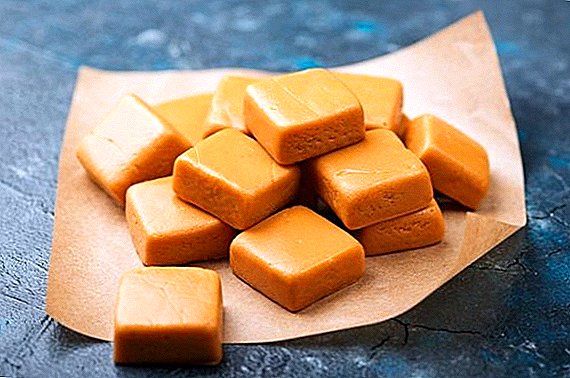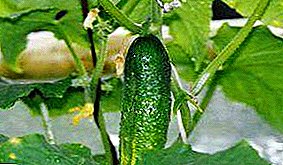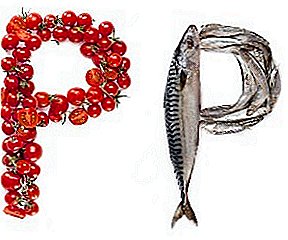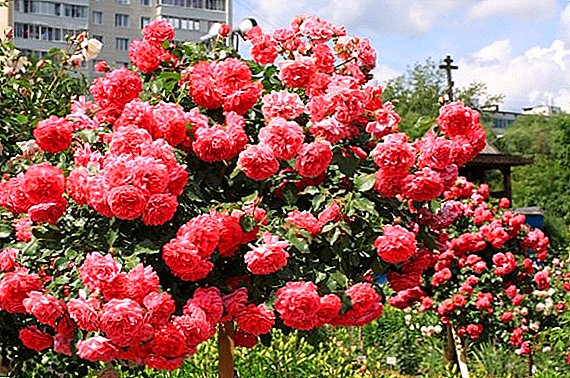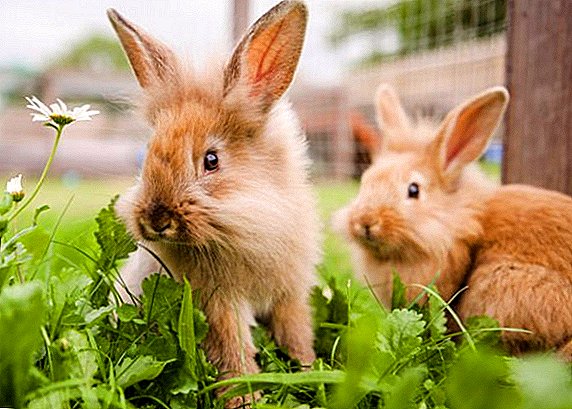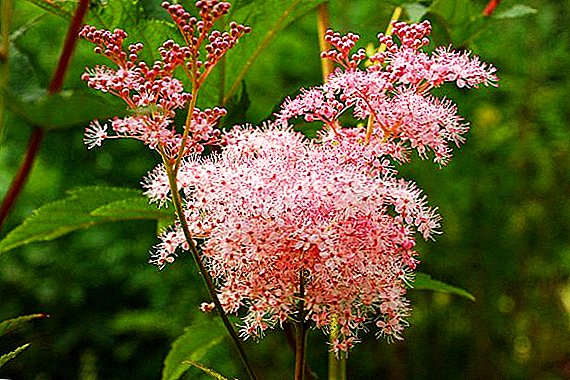 Spiraea - a representative of the family of pink, which is successfully used in traditional medicine and pharmacology. All parts of the plant have healing properties to varying degrees, which is quite rare. Meadowsweed preparations are effective in combating inflammatory processes of infectious and rheumatic etiology. Particularly pronounced is the ability of the plant components to influence the water-salt metabolism in the body and excrete with the urine excess of many organic salts.
Spiraea - a representative of the family of pink, which is successfully used in traditional medicine and pharmacology. All parts of the plant have healing properties to varying degrees, which is quite rare. Meadowsweed preparations are effective in combating inflammatory processes of infectious and rheumatic etiology. Particularly pronounced is the ability of the plant components to influence the water-salt metabolism in the body and excrete with the urine excess of many organic salts.
Chemical composition
Root meadowsweet contains a significant percentage of tannins (about 27%), which ensures the effectiveness of infusions and decoctions prepared from it in the fight against suppuration, as well as high antibacterial activity.
Strawberries, raspberries, blackberries, apples, pears, cherries, quinces, loquat, almonds, cherries, plums, apricots, peaches, shadberries, cherries, hawthorn, rose, spirea, rowan and cloudberries, as well as tavolga, belong to the family of pink and common in almost all areas of the globe.Coumarin is a natural anticoagulant. Coumarin itself, and more often its derivatives, can be found in various blood-thinning drugs or drugs that prevent the appearance of blood clots (Neodicoumarin, Warfarin). Another property of coumarin derivatives is a pronounced hypnotic effect.

Phenolic compounds (phenol glycosides, in particular) have high antiseptic, analgesic and anti-inflammatory properties.
Flavonoids - biologically active substances that have a positive effect on metabolism and, in combination with ascorbic acid, reduce the conductivity of the walls of blood vessels and capillaries, strengthening them in this way.
One of the most important acids for humans, ascorbic, is also a part of the meadow root, Of course, it is more expedient to obtain pure ascorbine from other sources. It is remarkable that ascorbic acid in the composition of the root of meadowsweet forms therapeutic compounds with flavonoids that enhance the properties of the plant, which has practically no contraindications. 
Grassy part plants contain substances such as acids, aromatics and camphor.
Phenolic acids have antiseptic, drying properties. On their basis, salicylic ointment, effective in combating skin diseases, was created; antipyretic - acetylsalicylic acid and the drug "Salol", which is used in gastroenterology to treat intestinal infections. Caffeic acid has an immunomodulatory effect, and ellagic acid acts as a cardioprotector, antioxidant and antihypertensive agent.
Camphor as part of a Labaznika is capable of toning the respiratory and vasomotor center.
Beneficial features
Due to the unequal distribution and accumulation of active substances in the body of the plant, its different parts are used for different purposes - let's see which ones. 
The roots
The roots are concentrated the greatest amount of tannins. Mainly ground chowder root is used to make decoctions and infusions. A decoction of the roots - a good anti-ulcer, astringent and wound healing and diuretic.
Diseases in which the use of roots is effective: urolithiasis, inflammation of the urinary tract of bacterial etiology, rheumatism, gout. Use of epilepsy can reduce spasms during seizures. Also, a decoction of the roots is used as a sanitizer for belyah women.
Grass
By and large, the grass of the Labaznika has all the same healing properties as the root, with a difference in the concentration of tannins. It has greater efficacy in choking and respiratory diseases. Means from the grass of meadowsweet are considered softer and are recommended for long-term use. 
Important! Herbs collected independently should be dried using the shady method. This saves more nutrients, but in the absence of an opportunity, a fruit dryer is also suitable in a gentle way.
Flowers
Labaznika flowers are very useful for their anti-stress, anti-depressant properties, of which only allergies are contraindications. In addition to decoctions and tea inflorescences are used to prepare the powder, which is treated festering wounds and struggle with excessive sweating of the feet.
Use in traditional medicine

Labaznik has been successfully tested for a long time and, of course, its first applications on the traditional medicine account. Depending on the nature of the problem, use different methods of cooking cloud oil. Moreover, the plant does not lose its beneficial properties in any of the processing methods, which makes it very multifunctional.
Did you know? Some sources claim that the anti-toxic action of the meadowsweet is strong enough to cope with snake venom.
Decoction
Cephalic broth is very effective in diarrhea due to its astringent and antibacterial properties. It is also used for rinsing hair, foot baths and gynecological baths (with belyah). Raw materials can be purchased at any pharmacy, it is very inexpensive and absolutely accessible to everyone. 
To prepare the broth, you will need 1 teaspoon of root of meadowsweet and 400 ml of boiling water. The ingredients in the specified amount are combined and boiled for 30 minutes, after which the broth is filtered through a thick layer of gauze, and the amount of water evaporated during the cooking time is filled with the usual boiled water. Consume one tablespoon three times a day half an hour before meals.
Broth for gynecological baths and douching is prepared according to the same scheme, but at the rate of 20 g of roots per 1 liter of water.
Tincture
Tincture has a stronger effect than decoction: for a long time the insistence and chemical activity of the alcohol do their job. An important advantage of the tincture is a long shelf life compared to other forms of home-made medicines, which quickly become unusable due to the lack of preservatives. 
In order to prepare the tincture of the flowers of meadowsweet, we need 50 g of fresh flowers, 500 ml of vodka and 20 g of sugar. Infuse the mixture should be at least 12 days. The resulting remedy is taken orally in 20-30 drops three times a day. It is acceptable to dilute a portion of 0.25 g of water for more pleasant use. The infusion is effective in diseases of the kidneys, reduced immunity, diabetes (reduces sugar), is good as a preventive measure for cervical erosion (prevents the development of conditionally pathogenic microflora), and also helps with edema.
Infusion
Infusion - medicinal solution on water, but more concentrated than a decoction. Used in smaller doses and mostly situational. Concentrated infusion is an excellent remedy for intoxication and intoxication of another kind. It gives good results in the treatment of purulent wounds, boils, ulcers, as well as in various skin diseases such as psoriasis.
For the infusion of roots of meadowsweet need 1 tablespoon of crushed roots and 200 ml of water. Boil in an enamel bowl with the lid closed for 15 minutes, then infuse for 45 minutes. Store in the refrigerator for no more than three days. Use 2-3 tablespoons three times a day half an hour before meals. 
Infusion of herbs and flowers of meadowsweet: 1 tablespoon of crushed raw materials, 500 ml of boiling water. The dry component is poured boiling water in a glass or enamel dish and leave overnight. After straining, take 0.25 ml four times a day before meals. Store in the refrigerator, shelf life - no more than 3-4 days.
Tea
Tea is the most pleasant and easy-to-make dosage form of meadowsweet. In addition to the pleasant honey aroma and sweetish taste, which has an infusion, it can be combined with other medicinal plants, depending on the expected effect. For example, with colds, tea made of linden and meadowsweet flowers is perfect. Also, the inflorescences can be combined with chamomile, mint - to obtain a sedative effect; with branches of currant and wild rose - for receiving a vitamin charge and increase of a general tone. 
Did you know? In the Scandinavian countries, the young shoots of the meadowsweet are added to salads, as well as to beer and wine because of their honey flavor.Labazhnika tea is prepared at the rate of 15 g of flowers per 1 l of water. Insist 5-10 minutes.
Ointment
The ointment is used for external use for therapy. skin diseases. It is prepared from dried and ground herbs or roots of a plant powdered, and petroleum jelly or lanolin is added as an astringent. Proportions for grass ointment:
- 5 g of powder
- 9 g of Vaseline
- 6 g lanolin
Medicinal plants such as periwinkle, wheatgrass, skoumpia, yarrow, nettle, celandine, bush, pumpkin, veronica, and mar are also used for skin diseases.

Root ointment:
- 20 g of powder
- 100 g of petroleum jelly
Important! For the preparation of ointments, it is desirable to use the most thoroughly powdered powder. This increases the effectiveness of the drug, as it increases the contact area between the components and the patient's skin, and also contributes to a better transportation of healing substances.
Contraindications
Clinical studies of herbs and roots of meadowsweet showed that with all its medicinal properties, the plant has practically no contraindications. 
Theoretically, esters and flavonoids that are part of the meadowsweet can theoretically cause allergic reactions, but in practice no such cases have been registered. The rest of the contraindications associated with the area of influence of drugs based on it: so, its not recommended for people with a tendency to constipation, hypotension, people with the threat of bleeding. Oral overdose can cause mild nausea and stomach discomfort, but the symptoms, as a rule, pass away on their own and do not need treatment.
Your health is in your hands! Of course, this does not need to be understood as a call for self-healing, because there is no substitute for qualified help. But erudition in matters of health will never be superfluous, and, undoubtedly, a moment will come when it will be useful to you. Be healthy!


